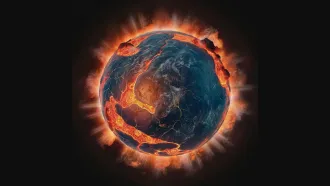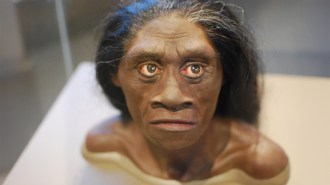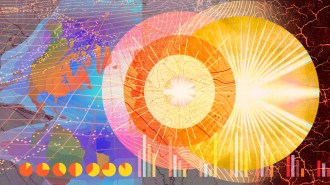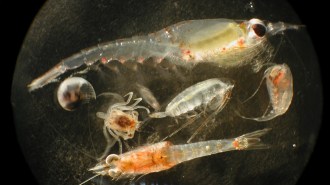Protected whales found in Japan’s supermarkets
Many of us get a feeling of satisfaction when we learn that governments or international bodies have issued regulations to protect imperiled wildlife. Such as whales. Then we encounter a paper like the one in the October Animal Conservation that snaps us out of our complacency. Its new data drive home once more that rules have value only if they’ll be enforced.
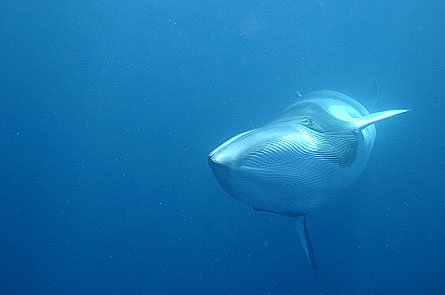
The new paper by Vimoksalehi Lukoschek of the University of California, Irvine, and her colleagues involves minke whales living off of Japan and Korea. The smallest type of filter-feeding baleen whales with pleated throats, adult minkes typically reach a length of 26 feet and weigh in at 10 tons. But the stat that matters most is their market value — perhaps $10,000 (U.S.) per adult.
Although there has been a moratorium on hunting whales since 1986, caveats exist. For instance, the International Whaling Commission, former whaling nations that imposed the ban, allows for “scientific whaling,” a misnomer by any definition of science. Japan, the only nation that still carries out this practice, allows the harvest of up to 160 north Pacific minke whales per year. However, they’re only supposed to come from a relatively healthy population known as the O stock. An already-hammered J stock has protected status under the IWC, meaning that its population should be totally off limits to whalers.
A second caveat involves whales that may be netted inadvertently by fishing fleets. When commercial fishers haul in nontargeted species — known as bycatch — those off-limits fish usually cannot be sold. Prohibiting their sale serves to discourage practices that foster bycatch.
Ironically, when that netted bycatch involves whales, some nations — notably Japan and Korea — allow their fishers to kill and sell the animals. Such a policy “provides an incentive to promote, rather than reduce, any net entanglement,” notes Lukoschek. “In this regard,” the marine ecologist argues, “the bycatch of whales in Japan and Korea is more like an unregulated commercial hunt than an incidental or illegal fishery.”
But that wouldn’t be a big deal if the minke bycatch were small. Lukoschek and her colleagues now offer data indicating it’s anything but.
For more than a decade, members of her team — including conservation geneticist C. Scott Baker of Oregon State University‘s Marine Mammal Institute — have been periodically sampling whale-meat products from stores, markets and restaurants in Korea and Japan. Both nations have a long heritage of eating whales.
In the new analysis, the researchers performed DNA fingerprinting on nearly 1,200 Japanese whale products that had been purchased between December 1997 and June 2004. Genetics confirmed that roughly 250 samples came from north Pacific minkes. (The rest came from 25 other species of whales and related cetaceans. And there was one woefully mislabeled product. Its contents: horse meat.)
Not only could the new genetic analyses identify whale tissue by species, but in some instances they could even differentiate which community of a particular species a landed whale had come from. For instance, J-stock minkes versus O stock animals.
And that’s what these researchers homed in on for their new paper. In theory, there should be no J-stock whales, since Japan’s scientific whaling had no permits for animals from this depleted stock. In fact, the new paper reports, 46 percent of Japan’s marketplace minke meat has been coming from J-stock whales.
That reflects the coastal fishing and “scientific” whaling, Baker concludes, because the J stock tends to prefer coastal waters to living on the high seas.
“Until recently — literally until June — Japan had pretty much denied that J-stock whales were found along its Pacific coast,” Baker says. “But it’s quite clear now, from their own work, which they’ve reported [at the IWC meeting’s scientific sessions] — but not published — that they are taking a high proportion of J-stock in their large ‘scientific’ hunt.” He adds that despite this, Japan has not made any direct efforts to limit its coastal whaling.
One impetus for his team’s new analysis was to see if a 2001 policy shift in Japan spiked J-stock harvests. Prior to that year, fishers could not legally sell to commercial firms any bycatch minkes. They were supposed to be destroyed or sold locally, and then reported to national authorities. Official figures indicated that through the 1990s, about 20 to 30 minkes were taken as bycatch in Japan. After 2001, however, bycatch whales could be marketed commercially — and suddenly yearly minke bycatch tallies jumped to between 89 and 137 animals.
The new Animal Conservation analysis reports finding no corresponding spike in the share of minkes — or the proportion of J-stock minkes — in commercial whale-meat products after 2001. Lukoschek’s team now concludes that similarly large numbers of J-stock animals were harvested before Japan’s shift in bycatch policy: Those earlier-netted animals were merely sold on the black market, Lukoschek suspects, where they “entered into the complex supply chain of commercial whale meat in Japan.”
An earlier analysis of the situation based on 81 products turned up evidence that just 31 percent of minke meat in Japan came from protected J-stock whales. At that rate, estimates had indicated this population of animals could go extinct within just a few decades. (Its current population size remains unknown, but probably is well under 14,000 — potentially far under that, Baker observes.)
The latest, far bigger study’s finding that J-stock animals account for 46 percent of Japan’s minke food products is, therefore, considerably more disturbing.
The Korean bycatch “is quite high too,” Baker notes. “It’s been as high as 160 a year.” And he points out that a five-year analysis of Korean whale harvests, which his team published two years ago, “suggested that the reported bycatch was about half of the true take. And that’s almost certainly due to directed, illegal hunting.”
Which isn’t good for a species that was ostensibly hands-off to all in the first place.
In a commentary that also ran in the October Animal Conservation, Andrew Read of Duke University Marine Laboratory in Beaufort, N.C., used polite language to lambast Japan’s official whaling program. Its putative “scientific” activities — which have killed more than 10,000 minkes since the whaling ban went into effect — “do not conform to the basic norms of science, such as hypothesis testing,” he says, “and are not necessary to manage whale populations.” Indeed, he argues, “There is no effective international or domestic oversight to ensure that these catches are either sustainable or necessary.”
So, we find, these toothless whales are being protected by regs that also lack teeth. What hope is there for them?
“We’ve been providing our data to the IWC every year,” Baker says, “and the Japanese didn’t pay much attention — until they realized [the data] were going to be published in an international journal.”
“The Japanese are responsive to international pressure,” he observes. For instance, he says that their reporting of bycatch and landings by the so-called scientific whalers “appears to be getting closer to the true take. “ What’s also needed, he argues, is official government collection — and international reporting — of regional J- vs. O-stock landings.
And, of course, ending altogether that pointless licensed whaling in the name of science or anything else.
In fact, Baker says, Japan’s begun lobbying the IWC for permission to do commercial coastal whaling, perhaps in place of “scientific” whaling. And that rankles him and other conservationists, of course, because the hammered J stock would likely bear the brunt of this hunt.
